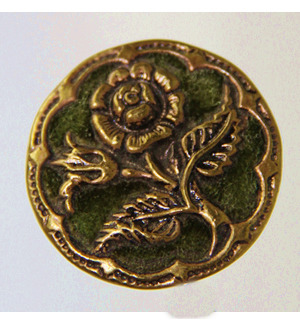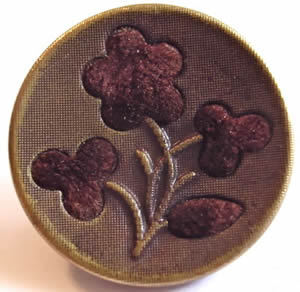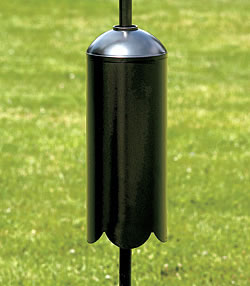Monday, August 31, 2015
Photo Shoot
Some things just make me smile..... a shot of my photographer taking "glamour" shots of Dragons and Winds.
Guess I'm just easily entertained.
The photographer is Mark Frey. Check out his website at www.markfreyphoto.com/. And in his portfolio section, he has posted another one of my baskets.
Sunday, August 23, 2015
Perfume Buttons
Having just learned this week about perfume buttons, I had to do some sleuthing. Naturally, I found a blog that had just the thing:


Victorian Perfume Buttons
http://ravenscourtapothecary.tumblr.com/post/63461391797/victorian-perfume-buttons
I just recently learned about these. I am a sucker for anything quirky in history, particularly the Victorian era, so it tickles me pink to tell you about them. So back in the 19th century, fragrances were mostly oil-based. Personally, I am a fan of oil perfumes in modern times as well - they don’t have that nasty alcohol smell to them and are incredibly long-lasting. However, noble dames of the Victorian era were not pleased with one aspect of such fragrances: they could stain your clothes, and wouldn’t that be a bummer. So the solution was found, cute as a button:





Such buttons had a cloth base, such as velvet or flannel, something that would absorb and hold fragrances, and were ornamented with metal patterns, often floral.
Scent buttons were manufactured in the United States in the 1800s. They were also massively popular in European countries, particularly France and England. During the Civil War in America, ladies would send their loved ones off to war and give them their perfume buttons as romantic tokens or their affection. Some soldiers died with these in their pockets, while others lived to tell numerous stories about how it kept them going, how it kept them sane.
Today these antique perfume buttons are used in jewelry making: they make lovely bracelets and necklaces:

Sunday, August 16, 2015
My Love/Hate Relationship with Critters
While I love watching some of the critters on this island, I don't especially appreciate their ravenous appetites for absolutely everything. I put out dishes of seeds for the chipmunks, but they still get into the bird feeders. Since I haven't planted anything of value (yet), the deer are okay. But they will easily foil my plans for the front yard if measures aren't taken.
Chipmunks - darling, quick, teasing (my cat), and adorable. But just try to keep them out of the bird feeders!


Squirrel guards don't work (they aren't squirrels, after all). The plastic dome around the feeder pole was demolished by the raccoons. My husband read that clamping a slinky (remember those??) to the pole would work. Maybe for squirrels, but my chipmunks (4 of them, to be exact) easily slithered up the pole inside of the slinky and leaped to the feast that way. I just ordered the stovepipe-style that clamps to the pole - we'll see.



I'm in the process of nurturing 50 starts from the ground cover at our mainland house to plant in the front yard on the island. (My kitchen table has become a temporary nursery.)
I know these young plants will be tasty morsels for the deer, in spite of the fact that they are not the usual fare for deer. After perusing all my options, I think I'll try spreading blood meal around the perimeter, starting now even before I plant anything. Then after planting, I'll spray around the plants with liquid deer fence. I understand that a tall, secure fence is the best option, but that would destroy my view.

I don't want to wage war on these lovely critters. I just want them to forage in other areas. I know, I know....silly me.
Chipmunks - darling, quick, teasing (my cat), and adorable. But just try to keep them out of the bird feeders!

Squirrel guards don't work (they aren't squirrels, after all). The plastic dome around the feeder pole was demolished by the raccoons. My husband read that clamping a slinky (remember those??) to the pole would work. Maybe for squirrels, but my chipmunks (4 of them, to be exact) easily slithered up the pole inside of the slinky and leaped to the feast that way. I just ordered the stovepipe-style that clamps to the pole - we'll see.


I'm in the process of nurturing 50 starts from the ground cover at our mainland house to plant in the front yard on the island. (My kitchen table has become a temporary nursery.)
I know these young plants will be tasty morsels for the deer, in spite of the fact that they are not the usual fare for deer. After perusing all my options, I think I'll try spreading blood meal around the perimeter, starting now even before I plant anything. Then after planting, I'll spray around the plants with liquid deer fence. I understand that a tall, secure fence is the best option, but that would destroy my view.

I don't want to wage war on these lovely critters. I just want them to forage in other areas. I know, I know....silly me.
Sunday, August 9, 2015
Learning About the Dominican Republc
Our family vacation at a resort in the DR (Dominican Republic) was amazing.....but the operative word there is "resort". Just outside the gates, when we ventured forth for sight-seeing, the evidence of poverty was staggering. As the "senior" of our family group, however, I was continually delighted to experience their reverence for their elders. (My new nickname became Super Mama!!)
While laying by the pool, or lazing on the beach enjoying the very white sands and crystal blue and green sea waters, my vacation reading included In the Time of Butterflies by Julia Alvarez (a Dominican Republic author), an historical novel relating an account of the Mirabal sisters during the time of the Trujillo dictatorship. As I was absolutely ignorant of any of this history, I found it fascinating. Another of her books, which I started on the return flight home, was A Wedding In Haiti, another wonderful read about friendship and the relations between Haiti and the Dominican Republic. Ms. Alvarez is an excellent author and one I highly recommend.
We had brought school supplies to share with the school children, an entire suitcase full, but it hardly seemed enough. My hope is that as a family, we will continue to pursue avenues of assistance for the friendly, welcoming people on this lovely island.
http://www.worldvision.org/our-impact/country-profiles/dominican-republic



While laying by the pool, or lazing on the beach enjoying the very white sands and crystal blue and green sea waters, my vacation reading included In the Time of Butterflies by Julia Alvarez (a Dominican Republic author), an historical novel relating an account of the Mirabal sisters during the time of the Trujillo dictatorship. As I was absolutely ignorant of any of this history, I found it fascinating. Another of her books, which I started on the return flight home, was A Wedding In Haiti, another wonderful read about friendship and the relations between Haiti and the Dominican Republic. Ms. Alvarez is an excellent author and one I highly recommend.
We had brought school supplies to share with the school children, an entire suitcase full, but it hardly seemed enough. My hope is that as a family, we will continue to pursue avenues of assistance for the friendly, welcoming people on this lovely island.
http://www.worldvision.org/our-impact/country-profiles/dominican-republic
Dominican Republic
The Dominican Republic shares a border with Haiti and stretches over the eastern two-thirds of the island of Hispaniola. Santo Domingo, the capital and the seventh largest city in North America, is the oldest continuously inhabited European settlement in the Western Hemisphere.
- Population: 10,276,600
- Life Expectancy: 73 years
- Access to Safe Water: 82%
- School Enrollment: 92%
- Land Mass: 18,791 sq. mi.
- Literacy Rate: 90%
- Under Age 5 Mortality Rate: 27/1000
- Average Annual Income (GNI): 5,470
Many Dominicans struggle with poverty. Around 41 percent of the population lives below the poverty line
The Dominican Republic ranks sixth among countries with the highest rates of femicide, or murder of women. Most of these crimes are never reported, according to official figures, and the group at greatest risk are women ages 15-24.
Nearly 75 percent of the population lives in an urban context. Challenges here include lack of access to basic services like clean water, shelter, medical care, education, sanitation, public safety, and electricity.
Sunday, August 2, 2015
Family Vacation
As we prepare for a family vacation in the Dominican Republic this summer, naturally I wanted to do a bit of research on what art and crafts we might find. I'm hoping some Larimar might find its way home with me!

ART AND CRAFTS

In the Dominican Republic, you have the opportunity to shop for arts and crafts that you can't find anywhere else. Their unique blend of Aborigine, European and African cultures has created an artistic style found only on the island. Over time, each culture's methods have blended together to create a new Dominican melting pot of techniques and traditions. These have produced some of the most popular crafts in the country, including basket-weaving, pottery, ceramics and jewelry made out of Dominican amber and larimar.
Visitors to the Dominican Republic fall in love with our beautiful gemstones, earrings, necklaces, rings and bracelets. Many are so taken that they bring others back for their friends and family. Larimar, a blue-colored semi-precious stone found only in the Dominican Republic, gives the jewelry a stunning twist unlike anything you've ever seen. You will also find many beautiful pieces that have been manufactured with bone and cow horn, coconut husk and other materials.
One of the best places to purchase Dominican ámbar and larimar jewelry, is right at the Ámbar Museum and the Larimar Museum in Santo Domingo and Puerto Plata. You will also find them in nearly all the hotel and resort gift shops. Many more Dominican crafts can be found at artisan's shops in the Modelo Market in Santo Domingo.
Using an ancient method, artists make baskets, bags, hats and backpacks from guano or cane. They also make Ceramic pieces that feature the Dominican landscape and classical floral designs.
In the charming seaside villages and small towns you will see dozens of little houses and decorated in the style of the local crafts. Here, they make beautiful pottery and faceless Dominican dolls known as Limé dolls. They make a great souvenir of the distinct Dominican culture. Local artists also create wooden figures from local Guayacan wood as well as many products out of locally produced leather.
In Santo Domingo, you will find an even larger selection of crafts around holidays. You should particularly keep an eye out for these seasonal items around the Christmas season and the annual Craft and Visual Festival.
Subscribe to:
Posts (Atom)

